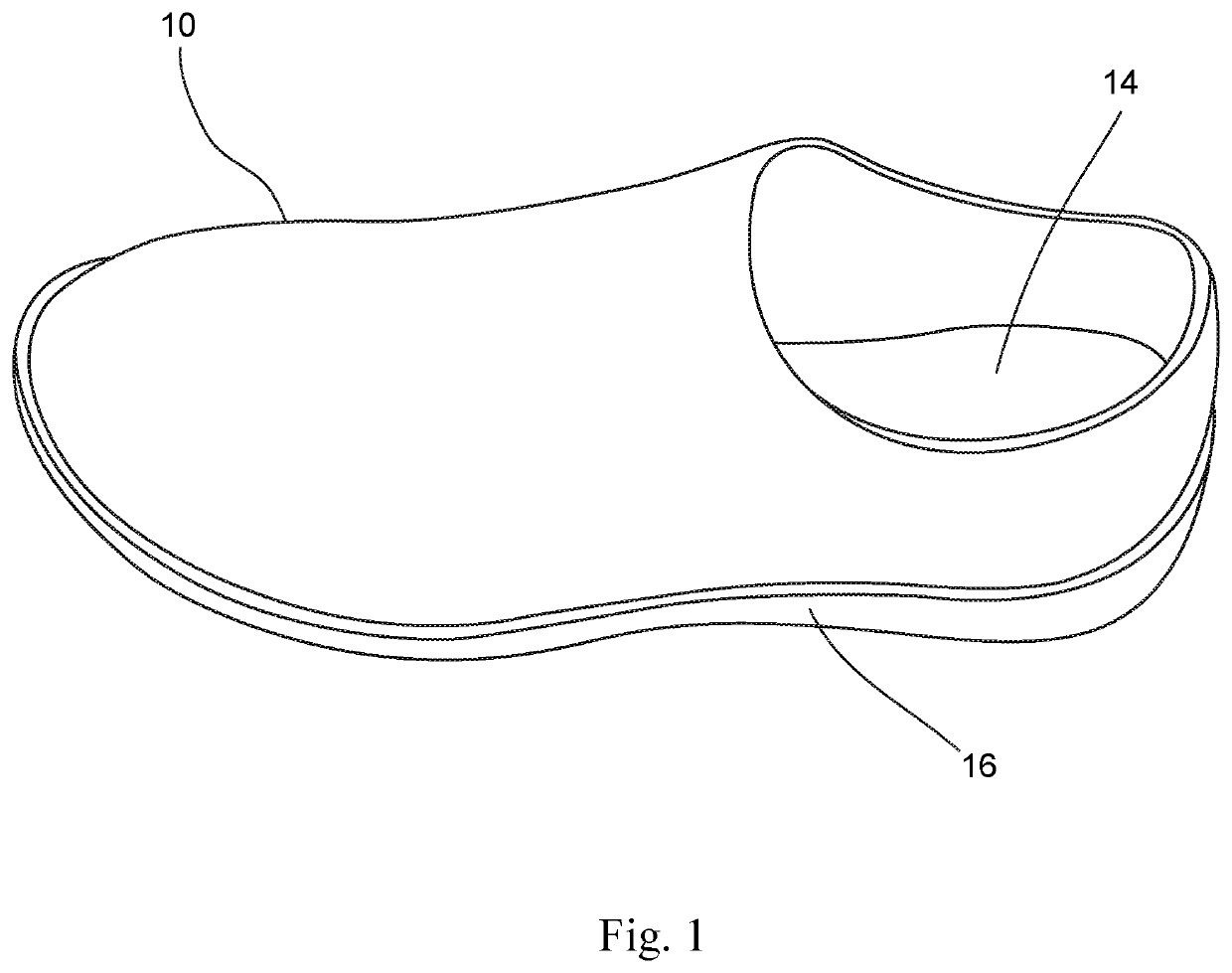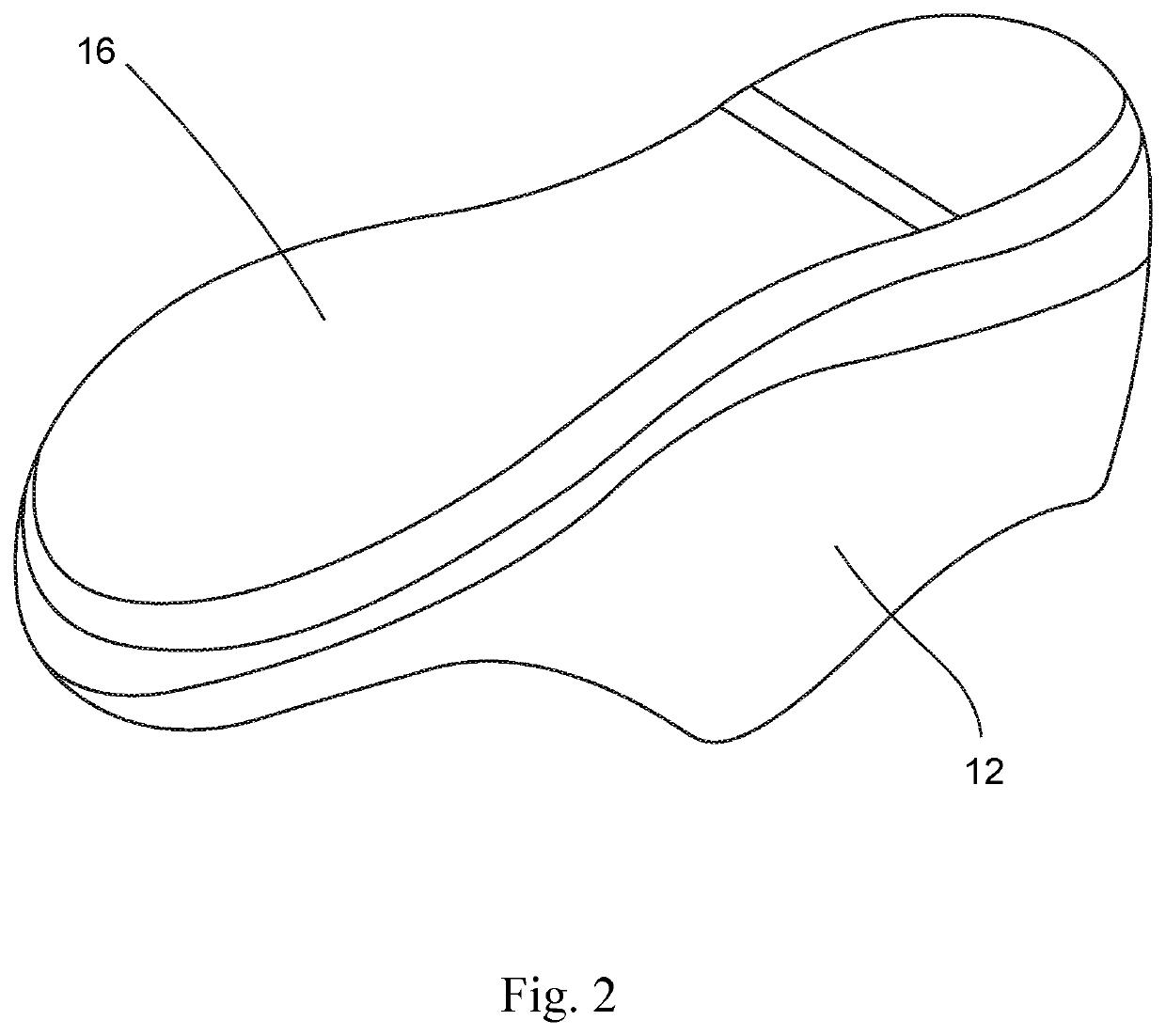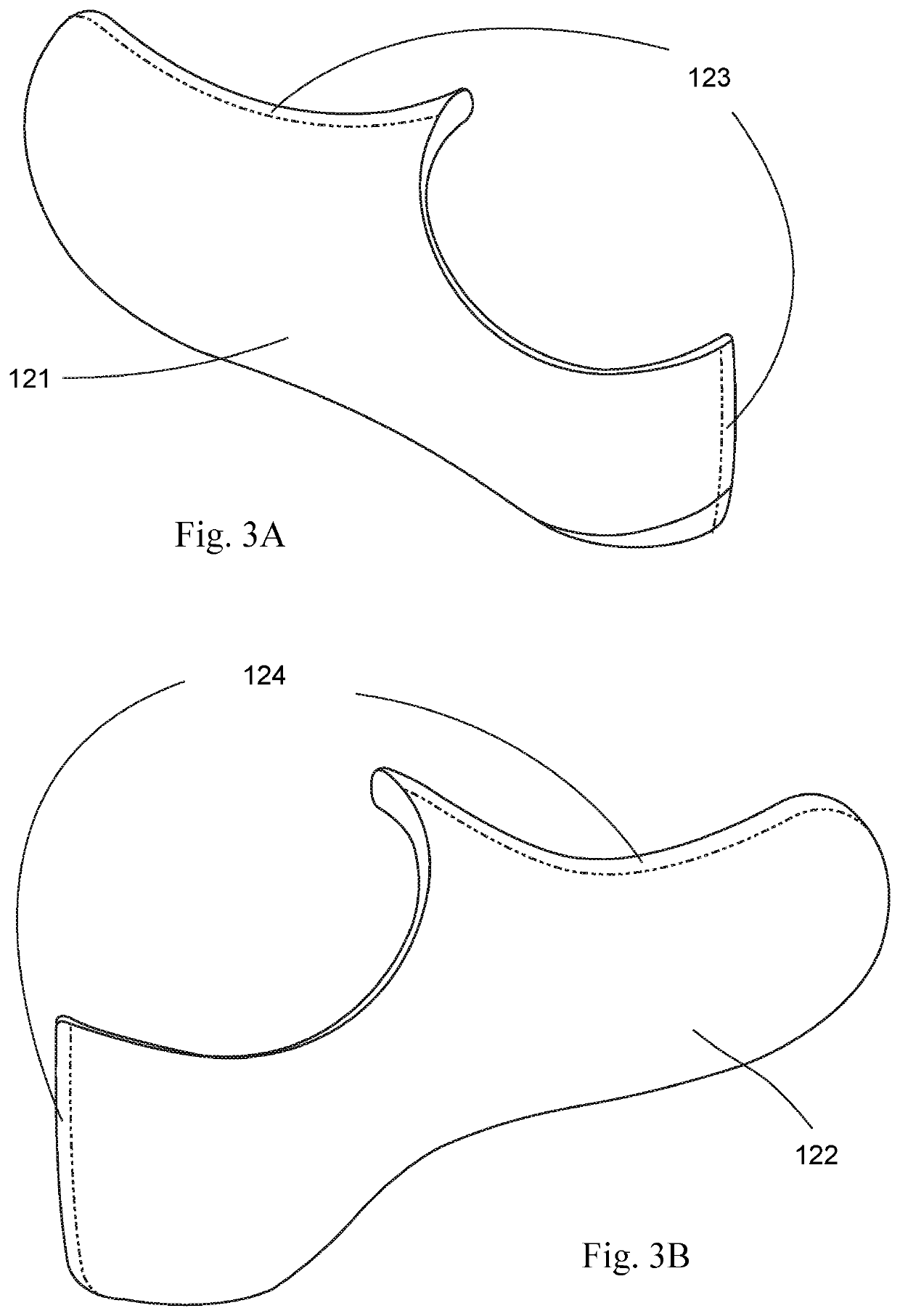Process for making a shoe and shoe thus made
a technology for making shoes and shoes, applied in the field of making shoes, can solve the problems of time-consuming, labor-intensive and complex preparation of shoes according to such gluing methods, and achieve the effects of reducing production time, eliminating the attachment of various shoe parts, and less labor-intensiv
- Summary
- Abstract
- Description
- Claims
- Application Information
AI Technical Summary
Benefits of technology
Problems solved by technology
Method used
Image
Examples
Embodiment Construction
[0039]The present invention is achieved, in part, by utilizing the stand-alone mouldable nonwoven fabric, such as those disclosed in PCT / CN2011 / 071371 and PCT / CN2011 / 084323 filed by the same applicant. The nonwoven felt fabrics taught by these two co-pending applications have excellent hardness and stiffness, remarkable moldability, and high compressive strength, therefore are suitable for the invention.
[0040]The international application under PCT / CN2011 / 071371 discloses a nonwoven needle-punch felt fabric and a method for producing the fabric. The nonwoven fabric is made of at least one low-melting-point short fiber and at least one high-melting-point short fiber, characterized in that the low-melting-point fiber is a solidifiable material, particularly is capable of solidifying after it is heated to melt, whereby the obtained felt fabric has the ability of self-sustaining and shape maintenance. The felt fabric disclosed in this patent application can also be moulded into various ...
PUM
| Property | Measurement | Unit |
|---|---|---|
| welding hardness | aaaaa | aaaaa |
| density | aaaaa | aaaaa |
| flexibility | aaaaa | aaaaa |
Abstract
Description
Claims
Application Information
 Login to View More
Login to View More - R&D
- Intellectual Property
- Life Sciences
- Materials
- Tech Scout
- Unparalleled Data Quality
- Higher Quality Content
- 60% Fewer Hallucinations
Browse by: Latest US Patents, China's latest patents, Technical Efficacy Thesaurus, Application Domain, Technology Topic, Popular Technical Reports.
© 2025 PatSnap. All rights reserved.Legal|Privacy policy|Modern Slavery Act Transparency Statement|Sitemap|About US| Contact US: help@patsnap.com



